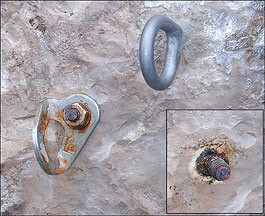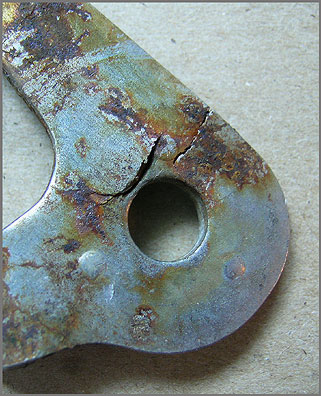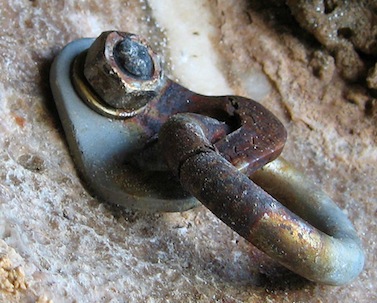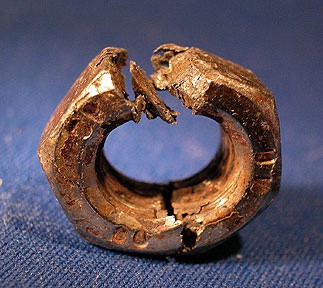Update Sept 2013
Stainless steel climbing bolts, even those of the highest quality, have been corroding and breaking in certain environments world-wide. The bolts break due to Chloride Stress Corrosion Cracking (SCC); see the article below.
If you are planning a climbing vacation to any of the following areas, or an area that has a similar environment, you owe it to yourself to find out more about the condition of the bolts. In other words, will the bolts hold a fall? All of the areas listed below have bolts breaking but most don’t know what to do, or can’t fix the problem due to money or regulations. Some locales actually cover-up the problem in order to keep the climber revenue coming.
To my knowledge the only places in the world that have properly addressed the problem are Thailand, Cayman Brac, Hawaii and Brazil. These places have replaced, or are replacing, the corroding stainless steel bolts with titanium bolts. Some places are experimenting with specialty steels but whether these steels will endure remains to be seen.
Known areas with corroding bolts
- Cuba, Dominican Republic and ALL of the Caribbean islands. Inland areas are not immune.
- Sicily, Kalymnos, Sardinia, Calanques and most Mediterranean areas
- Philippines, Viet Nam, certain Australian areas and many SE Asian areas.
What these areas have in common are:
- Limestone, sandstone, basalt (Brazil), granite (Portugal) on, or near the sea. However, it seems that limestone and sandstone do not need to be near the sea for SCC to occur.
- Warm climate.
- Periods of low humidity.
More information is available at:
If you have any questions, corrections or additions, please contact me. — John
Corroding Confidence
The invisible weakening of stainless steel bolts
Published in Climbing June 2001
Sport routes allow today’s climber to focus on doing moves without worrying about the consequences of a fall. His protection — modern stainless steel bolts — is so strong that he can casually take multiple leader falls. However, few climbers realize that these bolts are also susceptible to corrosion and sudden failure.
All three types of corrosion (which can occur simultaneously) on climbing bolts can be caused by similar conditions. Water must be present for oxidation, and salty water for galvanic corrosion and SCC. The longer the metal is wet, the faster corrosion proceeds; warm temperatures accelerate all three mechanisms.
Salt can come from the sea but it may be in the rock itself. Granite, basalt and other types of rock don’t appear to be a problem. Porous limestone, however, may have salt embedded within it. One theory is that rain falling atop a limestone cliff percolates through the rock, picking up salt or other contaminants before finding its way to the bolts. Some climbs have only a single bad bolt where the rock seeps water.
On tropical Cayman Brac, with its warm temperatures and sea-battered limestone, stainless steel bolts and hangers have failed in as little as 18 months. In cooler, drier, less salty Rifle, Colorado, bolts placed in seeping crags like the Skull Cave showed obvious corrosion after about 7 years.
Although oxidation and galvanic corrosion can easily be seen on a bolt, SCC is generally invisible. Not only are the cracks microscopic, SCC often occurs behind the hanger where it can’t be seen. More than one perfect-looking bolt has snapped off under body weight. A climber on Cayman Brac hit the deck when he weighted the second bolt of Throwin’ the Hula Girl. (I had done the route a few weeks earlier, luckily without falling, and except for a light patina of rust on them, the bolts looked perfect.)
SCC also attacks aluminum. A carabiner that was exposed to salt water for about a year was tested and failed due to SCC. If you climb by the sea, wash all your gear in fresh water once a month or when you return home.

An old corroded stainless bolt and the Titanium bolt that replaced it. Note the purple discoloration on the stud. (S. Harper)
Note 2104: at this time the titanium Eterna bolt can be purchased at Titan Climbing.


